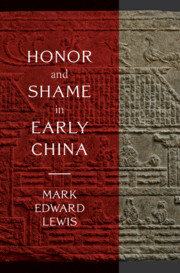Refine search
Actions for selected content:
23990 results in Ancient history
References
-
- Book:
- Women and Society in the Roman World
- Published online:
- 06 November 2020
- Print publication:
- 19 November 2020, pp 331-341
-
- Chapter
- Export citation
4 - Social Relations, Travel and Migration
-
- Book:
- Women and Society in the Roman World
- Published online:
- 06 November 2020
- Print publication:
- 19 November 2020, pp 183-220
-
- Chapter
- Export citation
7 - Imperial Women
-
- Book:
- Women and Society in the Roman World
- Published online:
- 06 November 2020
- Print publication:
- 19 November 2020, pp 299-330
-
- Chapter
- Export citation
Introduction
-
- Book:
- Women and Society in the Roman World
- Published online:
- 06 November 2020
- Print publication:
- 19 November 2020, pp 1-14
-
- Chapter
- Export citation
3 - Occupations
-
- Book:
- Women and Society in the Roman World
- Published online:
- 06 November 2020
- Print publication:
- 19 November 2020, pp 124-182
-
- Chapter
- Export citation
6 - Public Life
-
- Book:
- Women and Society in the Roman World
- Published online:
- 06 November 2020
- Print publication:
- 19 November 2020, pp 266-298
-
- Chapter
- Export citation
Preface
-
- Book:
- Women and Society in the Roman World
- Published online:
- 06 November 2020
- Print publication:
- 19 November 2020, pp xi-xi
-
- Chapter
- Export citation
Figures
-
- Book:
- Women and Society in the Roman World
- Published online:
- 06 November 2020
- Print publication:
- 19 November 2020, pp vi-x
-
- Chapter
- Export citation
Abbreviations
-
- Book:
- Women and Society in the Roman World
- Published online:
- 06 November 2020
- Print publication:
- 19 November 2020, pp xvi-xix
-
- Chapter
- Export citation
Glossary
-
- Book:
- Women and Society in the Roman World
- Published online:
- 06 November 2020
- Print publication:
- 19 November 2020, pp xii-xv
-
- Chapter
- Export citation

Honor and Shame in Early China
-
- Published online:
- 13 November 2020
- Print publication:
- 10 December 2020
Acknowledgements
-
- Book:
- The Social Dynamics of Roman Imperial Imagery
- Published online:
- 09 November 2020
- Print publication:
- 12 November 2020, pp xiv-xiv
-
- Chapter
- Export citation
Ten - Concluding Thoughts
- from Part III - Empire of Things
-
- Book:
- The Making of Empire in Bronze Age Anatolia
- Published online:
- 27 October 2020
- Print publication:
- 12 November 2020, pp 301-304
-
- Chapter
- Export citation
8 - The Altar of P. Perelius Hedulus in Carthage and the Social Aspects of Provincial Image-Making
-
-
- Book:
- The Social Dynamics of Roman Imperial Imagery
- Published online:
- 09 November 2020
- Print publication:
- 12 November 2020, pp 180-214
-
- Chapter
- Export citation
2 - The Altars of the Lares Augusti
-
-
- Book:
- The Social Dynamics of Roman Imperial Imagery
- Published online:
- 09 November 2020
- Print publication:
- 12 November 2020, pp 25-51
-
- Chapter
- Export citation
Abbreviations
-
- Book:
- The Social Dynamics of Roman Imperial Imagery
- Published online:
- 09 November 2020
- Print publication:
- 12 November 2020, pp xv-xvi
-
- Chapter
- Export citation
Eight - Plain Things
- from Part III - Empire of Things
-
- Book:
- The Making of Empire in Bronze Age Anatolia
- Published online:
- 27 October 2020
- Print publication:
- 12 November 2020, pp 228-263
-
- Chapter
- Export citation
Five - Nesting Faults
- from Part II - On Empire’s Edges
-
- Book:
- The Making of Empire in Bronze Age Anatolia
- Published online:
- 27 October 2020
- Print publication:
- 12 November 2020, pp 152-174
-
- Chapter
- Export citation
Figures
-
- Book:
- The Making of Empire in Bronze Age Anatolia
- Published online:
- 27 October 2020
- Print publication:
- 12 November 2020, pp ix-x
-
- Chapter
- Export citation
One - Empire Is Always in the Making
-
- Book:
- The Making of Empire in Bronze Age Anatolia
- Published online:
- 27 October 2020
- Print publication:
- 12 November 2020, pp 1-44
-
- Chapter
- Export citation
